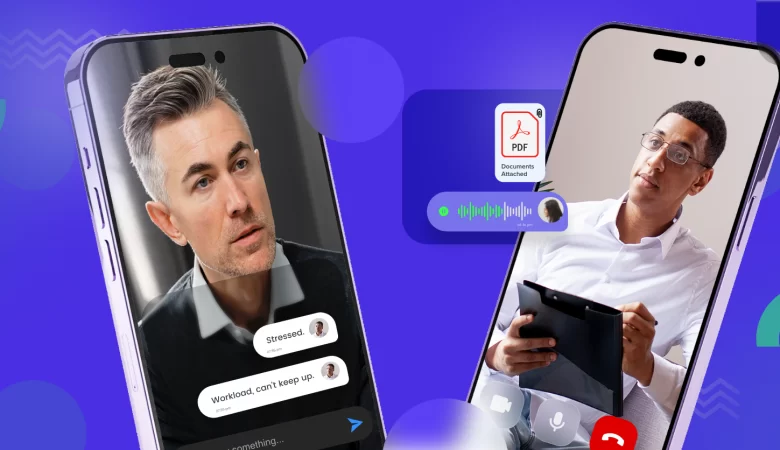Right from the time the first iPhone had launched, it is was the apps which centered the attention of several businesses. The number of apps for iOS started to grow rapidly, with businesses rushing over to create their own individual apps to favor their business. For few years, it was only the iOS based apps on the market to witness demands. With rapidly increasing audiences for mobile apps, Android began to step the industry, which thereafter experienced an exploding market share growth. It has been reported that there are over 200 million Android users in this world, which is almost the double of iOS users.
Android platform can feel complex on one end while on the other end, it is flexible. Before getting started with an android project, first of all you need to understand the platform and ecosystem the right way. Here in this post, you’ll know about the application building process for android.
Build Scalable App
There are diverse forms and sizes in which android devices come. As per the latest count, there are 600 android devices available so far and the number is growing each day. However, it is quite difficult to build an app that runs on all these devices. But, building it for just one or two screen sizes and one set of hardware can be pretty easy. Most of the iOS apps are built by keeping this on mind. They are generally built by placing pixels at the proper coordinates until the UI looks perfect. And, we can easily admit that the thing is not done on Android. Android designers need to be aware of the scalability of each component and the relationships between them.
Android is a time or period, and hence drawing a clear line between tablets and phones is cleanly impossible. And that too, checking whether the app is running on a tablet or phone is impossible technically. Comparatively, checking the screen sizes at run time is greatly possible. This is what every android designer needs to be aware of. Advanced technologies has made us to build websites that alter automatically to browser sizes by scaling and moving components. We call this approach as Responsive Web Design. Android designers can pursue on this approach to attain some great levels in designing apps.
Developers can define multiple layouts for every screen of their app. It is the OS which is clear about picking the best fitting one at run time. You can also make use of fragments to implement responsive design. Fragments are nothing but the building blocks of Android UIs, which can be programmed in order to be stand alone screens.
Make your App look Android-like
It is the consistency of the app that is more vital for the look and feel it delivers in a mobile device. Making it look foreign, that is designing it like being used in some other platform makes the users unhappy. Most android app designers attempt this mistake, by doing their app just like in iOS. A definite android app needs to have the ‘tab’ element embedded in the appropriate way.
Tabs – Tabs need to be on the top of any android app. Most developers would not have minded this keen, but this is what driven on the guidelines from advocates of android development. Putting the tabs on top makes scaling an app to larger screen sizes easier, while putting it at the bottom of a tablet-sized UI wouldn’t make sense.
UI patterns – Next is the UI pattern of the android. The look of the android apps concerns more. Action bar being one of the most popular patterns is now part of Android’s core libraries and can be used on any app running on Android 3.0.
Integrating App With Other Apps
The android platform handles a mechanism called ‘intents’ in which apps extend the functionality of each others. When an app registers to receive intents, it must tell the system what kind of intents it can handle. There are a plenty of ways an app can be integrated with others.
Social Integration
While in other mobile platforms, if your app needs to share something on Twitter, Facebook or other social networks, the sharing mechanisms are implemented internally in the app. But in android, this can be attained more easily by making use of intents. Based on the apps the user has installed, a list of app will be provided that can handle the operation. There are a plenty of benefits on integrating the app with social media networks using intents. With this, users needs not have to login to a separate application and the social network’s app takes care of logging in.
Consider Other Opportunities
Thinking about the functionality of other apps using intents system will mark a change. Your app even if stands good in quality, might sometimes buried under the apps that are used more commonly. Under such circumstances, consider extending the functionality of other apps. Apps that complement yours will be about to extend features without having to write or maintain any code. You can create your own API that is easy to use and maintain.
Quality Control
Testing android apps is quite difficult when compared to that of testing an iOS app. It is not just enough to test it with one or two devices and instead test it on a variety of screen sizes, densities and android versions. Also test whether the search button works on all relevant screens. Test it at least on one tablet device. Testing it for cloud service on multiple devices is also optional.
Distribution
Having tested your app and ready to use, get it to the users. It is time that you need to ship it to Google play. Any app uploaded to Google play, the popular android app store, will appear in the store’s listings to users. Your app needs to be shown along with the hundreds of other apps of varying quality. Your app will appear in the listing for new paid or free apps during that time.
Conclusion
Hope the above guidelines would help you better in understanding the android platform. Do bare in mind, writing an android app needs great effort and understanding. However, if done right, the app would definitely reach a maximum number of audiences.





Leave a Reply